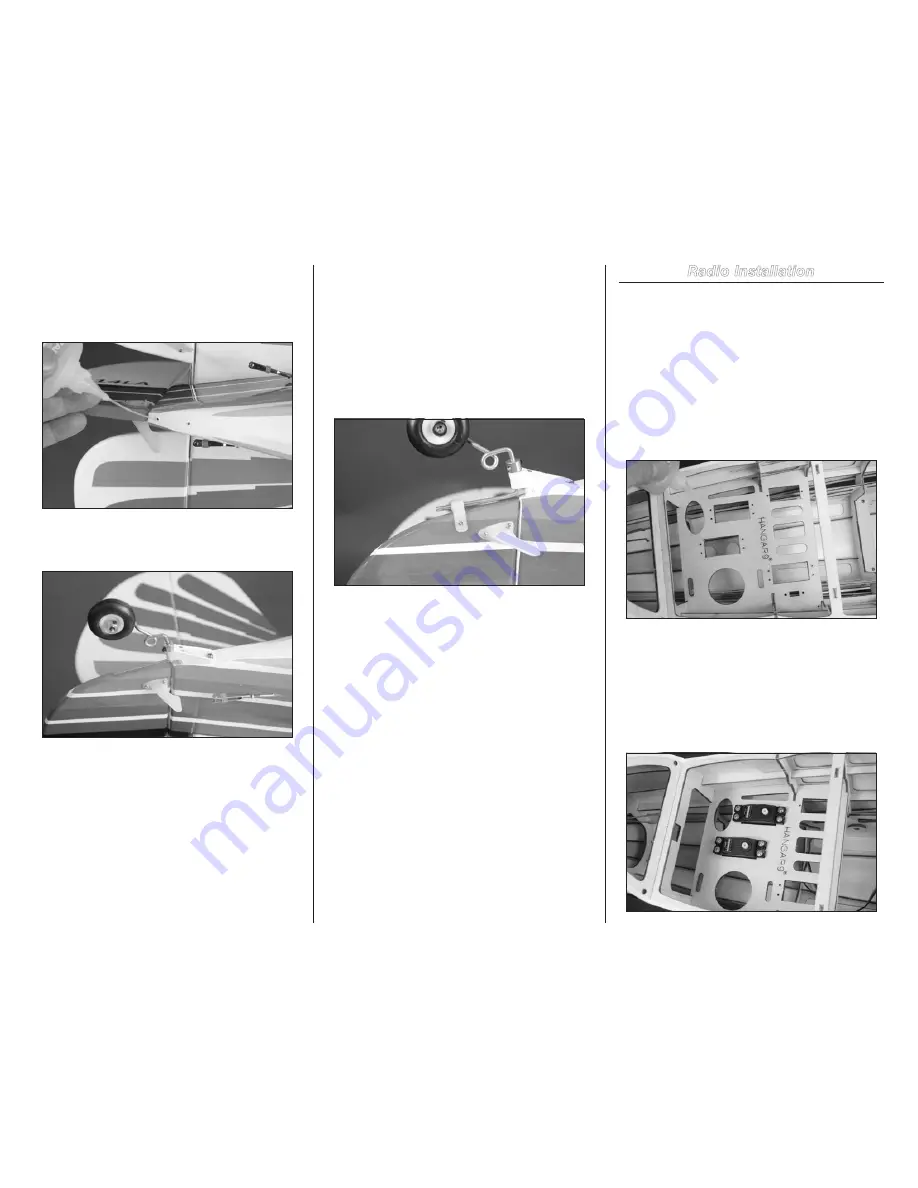
13
Hangar 9 Christen Eagle II 90 ARF
4. Use a pin vise and 5/64-inch (2mm) drill bit to drill the
holes for the mounting screws. Use a #1 Phillips screwdriver
to thread an M3 x 12 self-tapping screw in each hole.
Remove the screw, then apply 2–3 drops of thin CA in each
hole to harden the surrounding wood.
5.
Mount the tail wheel bracket using two M3 x 12 self-
tapping screws. Use a #1 Phillips screwdriver to tighten
the screws.
6. Slide the steering bracket on the tail gear wire so
it is positioned 5/8-inch (8mm) from the end of the wire.
Use a pin vise and 5/64-inch (2mm) drill bit to drill the
hole through the rudder using the hole in the bracket as
a guide. Secure the steering bracket using an M2 x 15
machine screw and M2 nut. Tighten the screw using a #1
Phillips screwdriver and 4mm nut driver. Make sure to use
threadlock on the nut to prevent it from vibrating loose.
Slide the wheel collar against the tail wheel bracket and use
a 1.5mm hex wrench to tighten the setscrew, securing the
position of the wheel collar.
Radio Installation
Required Parts
Fuselage assembly
Receiver
Receiver battery
Switch harness
Servo with hardware (3)
3-inch (76mm) servo extension (2)
1. Remove the canopy from the fuselage. Use a #1
Phillips screwdriver to thread a servo mounting screw in
each of the holes in the fuselage for the servo mounting
screws. Apply 2–3 drops of thin CA in each hole to harden
the surrounding wood.
You do not need to prepare the holes for the throttle
servo when building the model for electric power.
2. Install the grommets and brass eyelets in the rudder
and elevator servos. Use the screws provided with the
servos to secure them in the fuselage. Make sure the servo
output shaft faces the front of the fuselage for both servos.
Use a #1 Phillips screwdriver to tighten the screws.














































